

 The South African
The South African
In Part One of this article, published in Military History Journal, Vol 13 No 6, December 2006, pp 222-7, the author described how the first contingent of twenty battalions of Imperial Yeomanry, drawing on a century of tradition, was raised, trained, equipped and dispatched for service in South Africa in 1900, arriving in this country between February and April 1900. In the field, these gentlemen volunteers of the Imperial Yeomanry met with mixed success, but a decline in morale as the reality of war service hit home saw a massive reduction in the ranks by the end of the year. It was for this reason that a second and larger contingent was recruited in early 1901 ...
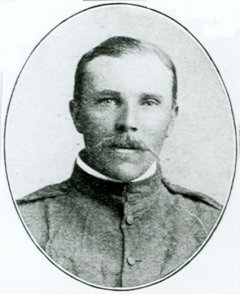
A second contingent, Imperial Yeomanry
The second contingent of Imperial Yeomanry (IY), totalling 16 733 men of all ranks, was born in haste, did not receive any preliminary training in the recruits' home districts, and was sent to Aldershot in January and February 1901. At the request of Lord Kitchener, these men were to receive their training in South Africa.
The new contingent was a totally different force from the original. Many of the rank and file were sent off to war before their officers had even been selected. Drawn mainly from the working class and motivated to enlist in the Imperial Yeomanry by the wage of five shillings a day (five times the daily wage of the infantry), the new contingent came to South Africa as poor soldiers with none of the hard-won skills or social status of the original contingent.
The British Government, keen to settle the newly claimed territory, offered the men of the Yeomanry the opportunity to bring their families with them. For a few months, the small remnant of the original IY contingent served alongside the second. However, by June 1901, these veterans, except those who had re-enlisted with the new force (including many enlisted men who had received commissions), returned to Britain.
If some decline in the standards of the first contingent had been allowed, it was ignored in the new contingent. Over 700 men, who had been passed fit in England, were sent back from South Africa as medically unsuitable or unlikely to become efficient soldiers. Those who indeed proved fit generally came from a hard existence that, if nothing else, prepared them for the harsh life on the veld. Amongst the officers selected, some lacked any leadership potential and others were sent back after having been found to be cowards, drunkards or simply incompetent.
As a means of overcoming the difficulty of officer selection, the ranks of the Yeomanry were increased to 155 men in a company (as opposed to the previous 121) so that fewer officers were required. Officers were also drafted in from other units, together with some of the men of the original contingent, who had been persuaded to stay on (Asplin, 2000, p 7; Report by His Majesty's Commissioners, p 72).
Attack at Modderfontein Farm
On 29 January 1901, a British post on the farm Modderfontein, 40km north-west of Potchefstroom in the Gatsrand hills, which had been set up by some infantry, received a welcome visit by a supply convoy together with mounted infantry and the 59th Company, 15th Battalion, Imperial Yeomanry. Almost immediately afterwards, the post was attacked by a large commando under Combat General P J Liebenberg, led by Assistant Commandant-General J C Smuts.
A Boer commandant charged a sangar held by Capt H B Magniac of the Imperial Yeomanry. Called upon to surrender, Magniac replied: 'No surrender for us!' and fired, killing his enemy. There followed a sharp hand-to-hand combat during which the Boers recoiled and Magniac survived. After a fight lasting 44 hours, the British post was eventually overwhelmed in a dawn attack on 31 January. The commando was driven off by a British column arriving from Krugersdorp, but Smuts remained in command of the Boer forces in the area until he commenced his invasion of the Cape Colony.
The British losses were thirteen men killed, amongst whom were two men of the Imperial Yeomanry, and 190 British soldiers taken prisoner. On 2 February, an effort to reach the beleaguered men at Modderfontein was thwarted by Smuts, causing the British relief force to withdraw with the loss of 40 casualties (Wilson, Vol I, pp 397401; Amery, Vol V, pp 113-5; Watt, 2000; Asplin, Vol II, 2000, p 343).
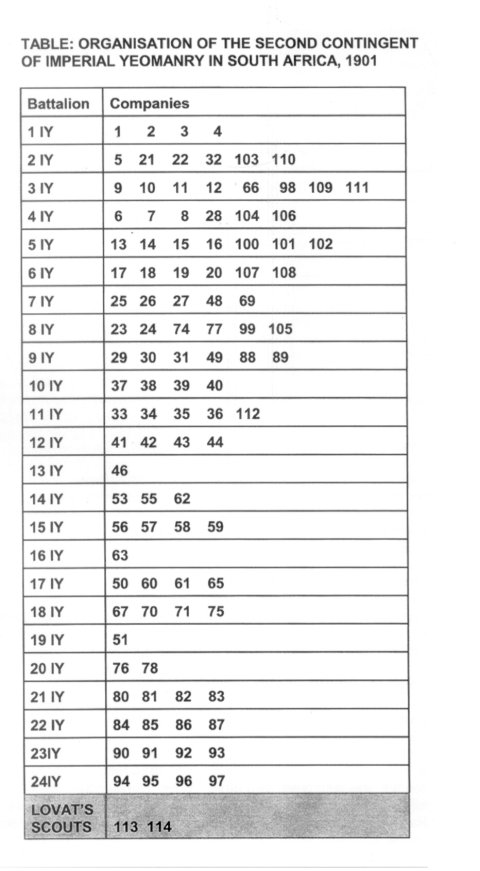
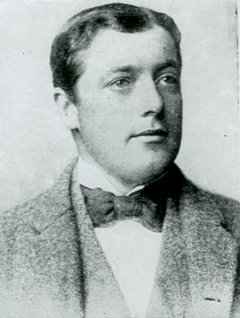
Armstrong, Capt Henry William (1868-1901), was killed in action at Vlakfontein on 29 May 1901. He arrived in South Africa from Canada with Lord Strathcona's Horse in February 1900 and saw action at Dalmanutha on 13 October 1900. He was granted a commission as a lieutenant in the 27th Company, 7th Bn, Imperial Yeomanry and promoted to captain in August 1900. Armstrong was buried at Vlakfontein but his remains were exhumed and re-interred in the old cemetery in Krugersdorp. (Photograph: Graphic/Illustrated London News).
Action at Hartebeestefontein
Marching towards Klerksdorp on 16 February 1901, Lt Gen Lord Methuen's column, having selected a different route through hilly country, was confronted by a Boer force at Hartebeestefontein (now Hartbeesfontein). There was no sign of the Boers until the Imperial Yeomanry advanced. Then, in the words of a Yeomanry trooper, 'suddenly without a word of warning, a hundred Mauser rifles cracked, and a shower of bullets whistled past us. We were subjected to a hot crossfire. Without a moment's hesitation I turned round to the left, and galloped as fast as I could to the nearest place of shelter, which was a [native] kraal to my left, about 100 yards [91 m] distant. Here I was joined by the rest of the troop, all of whom had marvellous escapes, and dismounting and lying flat behind what cover we could get, we blazed back at the Boers.'
The British artillery came into action and shelled the Boer positions while the pressure was taken off the Yeomanry by the advance of the infantry and support offered by the 5th Bn, Imperial Yeomanry. They carried the koppies in front of them and the Boers then withdrew. The British casualties included seven members of the Yeomanry killed or died of wounds.
Two days later, Methuen's column again met with a burgher force at Hartebeestefontein, this time under General P J de Villiers. Despite fierce resistance, the Boer position was turned and Methuen's force entered Klerksdorp on the following day (Wilson, Vol I, pp 383-4; Watt, 2000).
Lichtenburg
The town of Lichtenburg and the district surrounding it furnished two Boer commandos, under Commandant H C W Vermaas and Commandant J G Celliers respectively. The town was occupied by the British for a few days in June 1900 and then on a permanent basis from late November 1900. It became an important supply depot and the British garrison of 620 men comprised infantry, artillery and Yeomanry, specifically the 10th Company, 3rd Battalion, IY, and two companies of Paget's Horse, or the 19th Battalion, IY.
On 3 March 1901, Lichtenburg was attacked in a three-pronged assault on the town by an estimated 300 Boers. From the west, Commandant Vermaas assailed the fortified British redoubt in the market square, while the second and third attacks from the east and west were directed against the British pickets on the edge of the town. After facing determined resistance for 24 hours, the Boers were forced to withdraw, General de la Rey coming to the assistance of Vermaas.
An Imperial Yeomanryman recounts the action as the Boers rushed the British trenches: 'How those pickets did fight! The picket trenches never contained more than 7 men, and in one trench only two were left, the others being killed or wounded. When relief arrived a sergeant was just saying to one comrade "Fix bayonets, we'll keep the ... back".' The defenders lost 21 men killed and died of wounds (two of them Yeomanrymen), and 24 wounded. The Boers lost fourteen men killed and forty wounded (Wilson, Vol I, p 390; Watt, 2000; Amery, Vol IV, pp 222-4; Van den Bergh, 1996, pp 116-8).
British convoy under fire
On 23 May 1901, the Boers delivered a desperate attack on a British convoy which was proceeding from Potchefstroom to Ventersdorp, escorted by the garrison from Potchefstroom to Witpoortjie, where it was met by a hundred infantrymen and 58 men of the Dorset Imperial Yeomanry (the 26th Coy, 7th Bn, IY) with one gun, who had arrived from Ventersdorp.
No sooner had the exchange of escorts taken place when a Boer force, estimated to be 300-strong, swooped on the convoy. The gun came into action, and the troops from Potchefstroom, returning to the scene, forced the Boers to break off the action.
The Yeomanry, newly arrived in South Africa, 'were running about all over the place, having no one to lead them'. The convoy lost nearly a quarter of its strength, suffering two men killed (including one member of the Yeomanry), and sixteen wounded.
During a second attack delivered on the convoy later that day, the Boers were repulsed by a British detachment from Ventersdorp. In total, the British force lost four men killed (two Imperial Yeomanry) and 31 wounded (Wilson, Vol I, p 525; Maurice & Grant, Vol IV, p 183).
Vlakfontein Farm
The first blooding of the new Imperial Yeomanry force took place at Vlakfontein Farm (now Derby), 40km south-south-west of Rustenburg, on 29 May 1901. In August 1900, the farm had been used as a British base for operations against Chief Commandant C R de Wet. On 28 May 1901, a farm-clearing column of 1 230 to 1 600 men under Brig-Gen H G Dixon, arrived at Vlakfontein from Naauwpoort and, on the following day, discovered a cache of ammunition on the neighbouring farm, Elandsfontein ..
Too late in the day to deal with this discovery, Dixon ordered his column to return to Vlakfontein in the early afternoon.
Just then, a party of burghers set fire to the dry grass west of the ridge, which blew into the faces of a rearguard detachment under Maj H Chance. Under the cover of the veld fire, 300 to 400 Boers serving with Combat General J C G Kemp attacked and overwhelmed the men of the 7th Bn, Imperial Yeomanry, and a company of infantrymen.
Two guns were captured and these were turned against another British detachment, but a determined counter-attack by five companies of infantry, sent by Dixon, forced the burghers to retire. As the infantrymen came to the aid of the Imperial Yeomanry, one of them was heard to say: 'Here comes 1s 3d a day to save 5s a day', a grim comment about the disparity in wages between the private in the Imperial Yeomanry and his Regular Army counterpart.
The Boers then set about robbing and, in some cases, shooting the wounded soldiers. Sgt Chambers, Imperial Yeomanry, saw 'a Boer ... going round carrying his rifle under his arm, as one would carry a sporting rifle, and shoot[ing] three of the wounded ... '
British losses were heavy - 69 were killed, 110 wounded and eight missing. The Imperial Yeomanry suffered the heaviest casualties, the 26th, 27th, 48th and 69th companies of the 7th Bn, IY, collectively suffering 33 fatalities, including five officers. The Boers suffered nine men killed or died of wounds (Wilson, Vol II, pp 531-42; Wulfsohn, 1992, pp 159-65; Van den Bergh, 1996, pp 119-23).
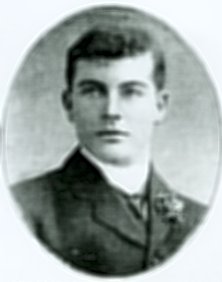
Spring, Lt Henry Geoffrey of the 27th Company, 7th Bn, Imperial Yeomanry, was killed in action at Vlakfontein on 29 May 1901. In 1900 he had served as a trooper in Bethune's Mounted Infantry, but volunteered for, and was granted, a commission in the Imperial Yeomanry. Spring and Sgt Finlay were reported to have been shot dead while binding up each other's wounds. Spring was buried at Vlakfontein, but his remains were exhumed and re-interred in the old cemetery in Krugersdorp. (Photograph: Graphic/Illustrated London News).
Selons River Drift
In the same way as the first contingent, Imperial Yeomanry, had done, the second contingent improved with time. On the afternoon of 29 September 1901, Col R G Kekewich halted on Moedwil Farm, 25km west of Rustenburg, near a drift across the Selons River. There he made preparations for a bivouac site. The column of 930 men was composed mostly of infantry, mounted infantry, artillery and Yeomanry (the 27th and 48th Coys, 7th Bn, Imperial Yeomanry).
De la Rey ordered his subordinate, Gen J Kemp, to attack the bivouac site. A patrol of Yeomanry alerted the British troops about a party of burghers advancing towards their camp. General Kemp, with 280 men, had sent out two outflanking wings to surround the British camp, while the main thrust, in the centre, attacked from Selons River.
With a group of orderlies, cooks and batmen, Maj C N Watts soon realised that his own quarter was in little danger, and swung around to attack the Boer left along the banks of the river, with support from the infantry, mounted infantry and the Yeomanry. The Boer line along this flank was enfiladed and the burghers were forced to retire after sustaining losses amounting to eleven killed, 35 wounded, and ten taken prisoner.
The British lost 61 killed or mortally wounded - there were twelve Imperial Yeomanry fatalities amongst them - and 158 wounded, including Kekewich himself. Having lost 327 horses and hundreds of draught animals, Kekewich moved to Magatos Nek near Rustenburg to be refitted (Amery, Vol V, pp 376-85; Wulfsohn, 1992, pp 159-65; Van den Bergh, 1996, pp 159-65).
Halt at Driespruit
Meanwhile, the Imperial Yeomanry in the Orange River Colony (the British-occupied Orange Free State) had not been idle. On 12 July 1901, a patrol of forty men of the 33rd Company, 11th Battalion, Imperial Yeomanry, carrying dispatches from Gen Sir L Rundle to Maj-Gen B B D Campbell, was brought to a halt by sixty Boers at close range near Driespruit, outside Vrede. The Boers charged, firing from the saddle, and wounded eight men, one of them fatally.
The Imperial Yeomanry dismounted and returned the fire, driving off the Boers and killing their leader, Commandant C Botha. His body was later handed over to the Boers, who had sent for it under a flag of truce (Wilson, Vol II, pp 781-2; Moffett, 1903, pp196-7; SA War Casualty Roll, July-December 1901, p 18).
Doornrivier
On 27 July 1901, a detachment of 22 men of the 22nd Battalion, Imperial Yeomanry, set out from Doornrivier, 15km south-west of Virginia, to establish the whereabouts of a Boer commando operating in the vicinity. Having seen no sign of the enemy, the party was on its way back to camp when two groups of Boers suddenly appeared.
One group took up a position between the Yeomanry and their camp, the second, larger group emerging from the banks of the Doornrivier immediately behind them. Unable to escape, the detachment sought sanctuary from a nearby farm building. Under the cover of a dam, however, the Boers were able to approach their quarry at close range and the Yeomanry surrendered after their ammunition ran out.
Trooper W Finch was seen lying severely wounded outside the building. Trooper F W Madams recalled that he 'went to look for my hat, and after finding it I was passing the wounded man, Trooper Finch, when I saw a Boer, whose name I do not know, shoot Trooper Finch through the chest with a revolver.' (Wilson, Vol II, pp 792-3; SA War Casualty Roll, Aug-Dec 1901, pp 24-5).
Raids and counter-raids
By the end of October 1901, the blockhouse system had improved the strategic map of the war, from the British perspective. Natal had been cleared of Boers and, in the Cape, the Boer guerillas had been hustled into two areas, the dry zones in the west and north-west of the Colony. In the Transvaal and Orange River Colony, the guerilla forces had become fragmented and were powerless to attack even the most remote railway line.
The British also used a new tactic - to raid the Boers' laager at night - and, as early as May 1901, these coups had achieved success in both former Boer republics.
Despite these British successes, however, three main regions of resistance remained the eastern Free State, the dry western Transvaal, and the eastern Transvaal. It was here that the Boer generals Christiaan de Wet and Koos de la Rey fine-tuned their own raiding technique to great effect. To survive, the guerillas needed a supply of weapons, food, fresh horses and clothing. De la Reywas an experienced raider and had a taste of success at Kleinfontein.
In an effort to track down de la Rey, two British columns under Lt-Gen Lord Methuen proceeded westwards to Zeerust. Col S B von Donop's column, with 680 men (infantry, artillery and Imperial Yeomanry) and a train of a hundred wagons, led the way.
Raid at Kleinfontein
On 24 October 1901, Von Donop was attacked at Kleinfontein, 6km west of Groot Marico. With 500 men, Boer generals J Kemp and J G Celliers bore down on the entire length of the convoy. The wagons, in the centre of the column, were their primary target.
The column, having been taken by surprise, was cut in two and the Yeomanry were driven into the bushes. The attackers then wheeled and enveloped the guns in the rear. They fell upon the infantry, the guns and some of the Yeomanry. The guns fell into Boer hands but, with the teams having been shot, they could not be moved.
The rest of the convoy, recovering from the initial ambush, stood their ground and opened fire. Von Donop wheeled the leading half of the column around to come to the relief of the stricken centre. This action forced the Boers to retire, allowing the gunners, infantry and Yeomanry valuable time in which to rejoin the fight. In particular, the Yeomanry seized and held a position commanding the guns, which prevented the Boers from removing them. The Boers then broke off the action, but not before capturing and removing fifteen wagons laden with supplies, 150 mules and 160 horses.
The British losses in the action were 38 killed or died of wounds, 46 wounded and six missing in action. Twelve men of the Imperial Yeomanry lost their lives. The Boers lost twenty men killed and 31 wounded (Wilson, Vol II, pp 850-3; van den Bergh, 1996, pp 131-5; Watt, 2000).
More blockhouses
The building of blockhouses from Frankfort to Heilbron commenced in October 1901. Brig-Gen E Hamilton, who was in charge of the construction teams, reported that, without assistance, his covering force, which was meeting with opposition, could make no further progress. On 19 December, two columns under Lt-Col J H Damant and Lt- Col M F Rimington were ordered out from Frankfort to protect the construction parties. This was the beginning of an unforgettable 24 hours for those involved.
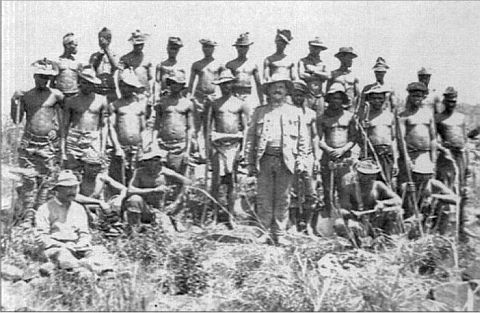
Blockhouse construction team (Photo: By courtesy, SANMMH).
When the first streaks of dawn appeared on the morning of 20 December, a symmetrical, flat-topped hill, Tafelkop, was seen clearly above the plain about 30km east of Frankfort.
Advancing around the hill and turning westwards towards the Wilge River, Damant's column halted close to a koppie and espied what was believed to be an Imperial Yeomanry formation moving towards them. At the last minute, Damant realized that this was, instead, a khaki-dressed commando under Assistant Chief Commandant W J Wessels. The Boers pounced on the nearest high ground and opened a deadly fire on one squadron of Damant's Horse, after some men of the Imperial Yeomanry had tried to forestall them. The men of the 91st Coy, 23rd Bn IY, serving as the 'escort to the guns', suffered heavy casualties during this action, sacrificing themselves 'almost to a man'. Before help was at hand, the British guns were seized and destroyed.
The 30th and 31st Coys, 9th Bn IY, rushed at the enemy, but the Boers retired with the arrival of Rimington's force. 'The sight of the wounded dying in the storm and the dead in rows, was terrible, and the last straw was reached when the regiment was twice struck by lightning while escorting the dead and wounded back to camp.'
British losses were 33 killed and 45 wounded. Amongst the dead were fifteen men of the Imperial Yeomanry. The Boer losses were estimated to be between twenty and thirty casualties (Amery, Vol V, pp 425-7; Maurice & Grant, Vol IV, pp 38891; Watkins-Yardley, pp 307-12; Watt, 2000).
De Wet at Groenkop
The worst catastrophe of the second contingent occurred at Groenkop on Christmas Morning 1901. At a Boer krijgsraad (council of war), Boer leaders in the Free State decided to launch a concentrated attack in what would be Chief Commandant C R de Wet's first serious attempt to take the offensive since early 1901. The strength of his own force was 700. There were at least 20 000 men pitted against him. He selected a position near Bethlehem.
By December 1901, Gen Sir Leslie Rundle had completed the eastern half of the construction of blockhouses from Harrismith towards Bethlehem, but had been allocated only a weak covering force to protect the construction parties. He had further weakened this force by separating it into four groups. The main group comprised about 500 men of the 11 th Bn Imperial Yeomanry (34th, 35th, 36th, 53rd and 62nd Coys) with a gun and a Pom-pom, all under the command of Maj F A Williams, and was encamped on a hill called Groenkop.
On the night of 24/25 December 1901, Christiaan de Wet had 600 burghers from eight commandos under his command. In stockinged feet, detachments under commandants W Meares and G A Brand silently scaled the steep west face of the hill and took the British defences completely by surprise. They reached the crest of the hill and opened fire on the tented camp below.
Four companies of the 11th Battalion, Imperial Yeomanry, bore the brunt of this attack. In an attempt to gain the crest of the hill, the 36th Company lost their leader, Lt Hudson, and never succeeded in regaining any coherent formation. Some of the men, gallantly led by Capt Hall, tried to reach the western crest of the hill, but as soon as they appeared on the skyline, both Hall and his subordinate, Lt Agnew, were shot dead. Major Williams ordered the remaining men to lie down.
Soon afterwards, the Boers, who were ensconced along the western plateau and whose numbers had swelled to 300, leaped forward and charged over the plateau, yelling and firing. The 53rd Company hastened to the southern crest of the hill when their leader, Capt Crawley, was mortally wounded. A picket of the 35th Company had already been put out of action, either annihilated or completely demoralised. Only a few shots were fired from the two guns on the hill before the Boer charge engulfed what remained of the 34th Company, who were desperately attempting to save the Maxim gun under Lt Watney.
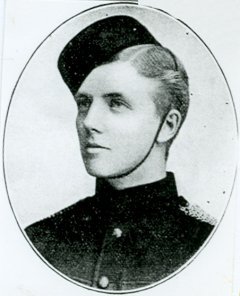
When the Boers overran the camp, the 53rd Company, on the southern slope of the hill, prepared to escape. However, a band of Boers appeared on their flank and opened a destructive rifle fire, causing heavy casualties. The company made an obstinate stand against the odds, only twenty men managing to escape unharmed.
De Wet left at dawn with 206 prisoners as well as two guns, rifles, twenty wagons with supplies of ammunition and tents, and 500 horses and mules. The British casualties were 68 killed or mortally wounded and 77 wounded. There were 57 fatalities amongst the Imperial Yeomanry alone: the 34th Coy lost 22; the 35th, ten; the 36th, seven; the 53rd, fifteen; the 62nd, two; and Headquarters, one. The Boers lost fourteen killed and 30 wounded (Wilson, Vol II, pp 892-8; Amery, Vol V, pp 433-42; Pakenham, pp 542-4; Watt, 2000; and Rabie, 1980, p 57).
Cape incursions
Apart from early engagements, the Cape Colony escaped the attention of the Yeomanry until Boer raiders descended into the Colony behind British lines. In December 1900, martial law was declared in Aberdeen, a village located 55km south-west of Graaff-Reinet. Subsequently, on two occasions, it was occupied by small parties of Boers.
On the morning of 5 March 1901, the small British garrison in the town was attacked, unsuccessfully, by the Boers under Commandant Gideon Scheepers. That evening, reinforcements arrived, comprising columns commanded by Col Sir C S B Parsons and Lt-Col H J Scobell.
The next day, Scheepers' force appeared in Zeekoe River, north of Aberdeen. Parsons sent out three patrols, two of which were detachments from the 75th Coy, 18th Bn, Imperial Yeomanry. One Yeomanry patrol was captured; the other came under crossfire from a series of koppies occupied by the Boers. When the koppies were stormed soon afterwards, the Boers retired to the north of the village. This fight cost the Imperial Yeomanry a total of nine men, of whom four were killed or mortally wounded (Wilson, Vol I, pp 488-9; Amery, Vol V, p 128; Watt, 2000; SA War Casualty Roll, Jan-June 1901, P 22; Shearing, 1999, pp 613; Watkins-Yardley, 1904, p 250).
In pursuing a commando under Commandant Scheepers, a British force under Lt-Col E S Crabbe overtook a detached section of Boers on the road between Matjiesfontein and Ladismith.
On 9 September 1901 , Crabbe rushed the Boer front at Driefontein Farm near Laingsburg with a force which included four squadrons of Imperial Yeomanry drawn from the 38th Coy, 10th Bn, the 104th Coy, 4th Bn, and the 57th Coy, 15th Bn. Five British soldiers were killed, three of whom were members of the Yeomanry. The Boers lost three men killed or died of wounds, and 37 taken prisoner, including Assistant Commandant P van der Merwe (Wilson, Vol II, p 713; Watt, 2000, Shearing, 1999, pp 124-7).
Rooikoppies
Men of the 24th Coy, 8th Bn, Imperial Yeomanry, formed part of an escort to a convoy under Maj J F Humby that was proceeding with supplies towards Griquatown when it was attacked on 24 August 1901 near Rooikoppies. It was only Humby's promptness and the good conduct of his troops, who fought throughout the night, that prevented the capture of the convoy. The British losses were all men of the Yeomanry - twelve fatalities (Maurice & Grant, Vol IV, p 345; Watt, 2000).
Brakspruit
Meanwhile, Boer resistance continued in the western Transvaal. Lt-Col W B Hickie, with a force of mounted troops and infantry, totalling about 870 men, was engaged in covering the construction of blockhouses on the Schoonspruit. On 13 November 1901, Hickie lost heavily at the farm, Brakspruit, 32km north-east of Klerksdorp, when two squadrons of Imperial Yeomanry (drawn from the 103rd and 107th Coys, 2nd Bn, and the 107th Coy, 6th Bn, IY), whom he had sent forward to reconnoitre, were destroyed. Ten men were killed or mortally wounded, eleven were wounded, and 64 were taken prisoner. In this action, the Boers lost four men killed and eight wounded (Wilson, Vol II, p 856; Maurice & Grant, Vol V, pp 339-40, 348; Watt, 2000; and Amery, Vol V, p 229).
Raising a third contingent
By the end of 1901, plans were underway in England to fight the incessant reduction of the Imperial Yeomanry by wastage. A system of drafts had not yet been introduced, but the 25th and 26th battalions 'were being raised from former Imperial Yeomanrymen, ex-regular soldiers and men who had served in the colonies. Lessons from a year earlier had been learned. By December 1901, a third contingent was being raised to allow the new men sufficient time for proper training before deployment.
(The third and final instalment of this story will appear in the next issue of the Military History Journal, Vol 14 No 2, December 2007).
SELECT BIBLIOGRAPHY
(The full bibliography will appear at the end of Part 3 of this article, in Military History Journal, Vol 14 No 2, December 2007).
Amery, L (ed), The Times History of the War in South Africa, Vols IV, V (London, 1902-9).
Asplin, K J, The Roll of the Imperial Yeomanry, Scottish Horse and Lovats' Scouts, 2nd Boer War, 1899-1902, Vols I, II (Salisbury, UK, 2000).
Maurice, Maj-Gen Sir F, and Grant, Capt M H, History of the War in South Africa, Vols II-IV (London, 1907-10).
Moffett, E C, With the Eighth Division (Kingston-on-Thames, 1903).
Pakenham, T, The Boer War (London, 1979).
Rabie, Major J E, Generaal C R de Wet se Krygsleiding by Sannaspos en Groenkop (Pretoria, 1980).
Report of His Majesty's Commissioners appointed to inquire into the military preparations and other matters connected with the War in South Africa (London, 1903).
Shearing, Taffy and David, Commandant Gideon Scheepers and the search for his grave (Sedgefield, 1999).
South African War Casualty Roll, The 'South African Field Force', 11 Oct 1899 -June 1902 (Suffolk, UK, 1982).
Van den Bergh, G, 24 Battles and Battlefields of the North-West Province (Potchefstroom, 1996).
Watkins-Yardley, Lt-Col J, With the Inniskilling Dragoons (London, 1904).
Watt, S, In Memoriam - Roll of Honour, Imperial Forces, Anglo-Boer War, 1899-1902 (Pietermaritzburg, 2000).
Wilson, H W, After Pretoria - The Guerilla War, Vols I,II (London, 1902).
Wulfsohn, L, Rustenburg at War (Rustenburg, 1992).
Return to Journal Index OR Society's Home page
South African Military History Society / scribe@samilitaryhistory.org